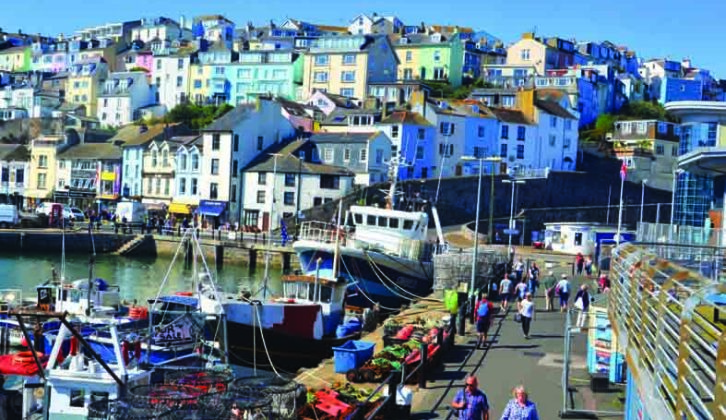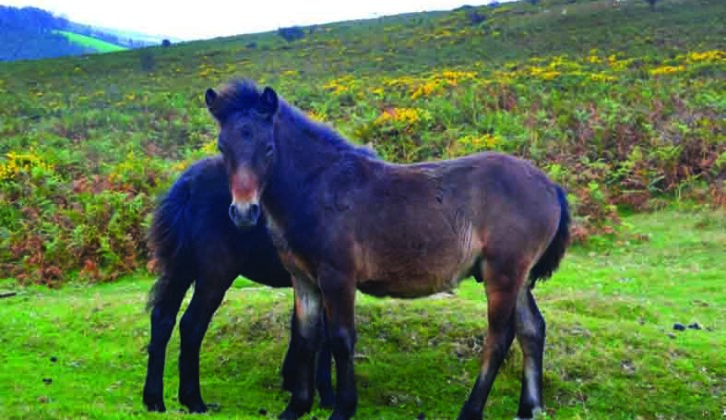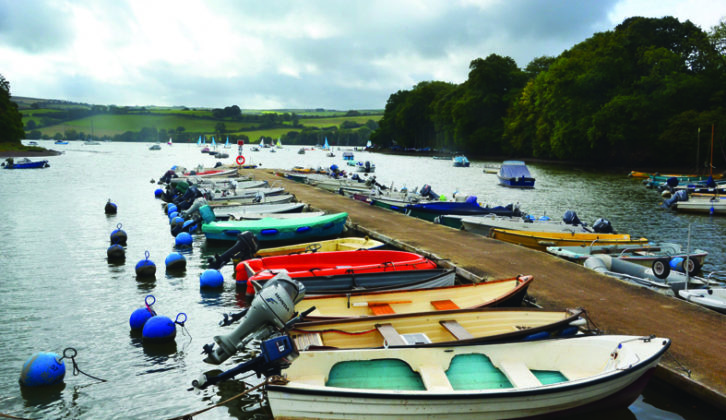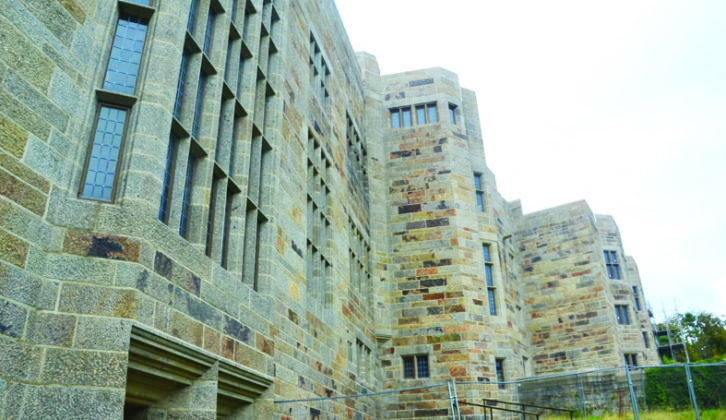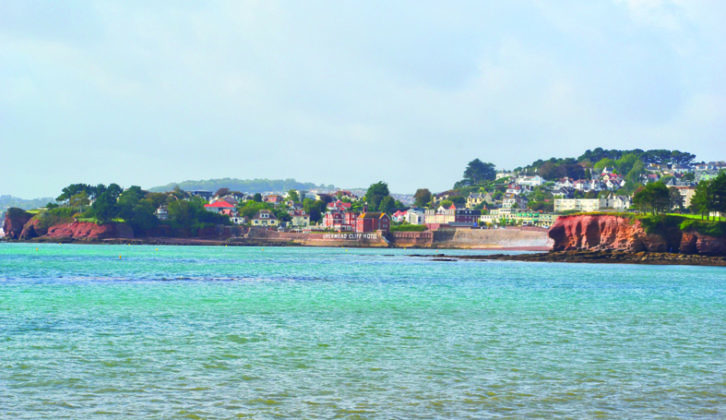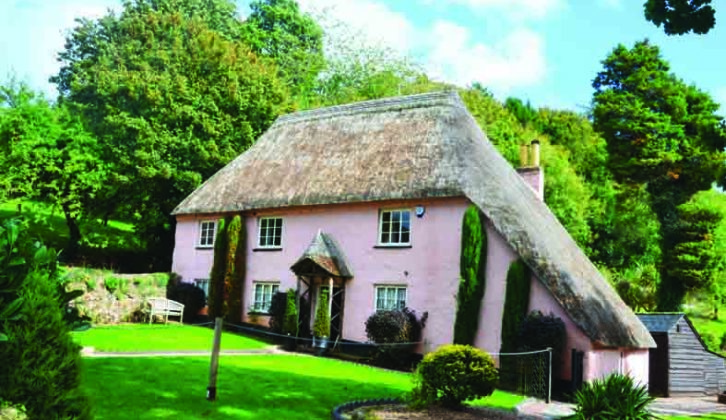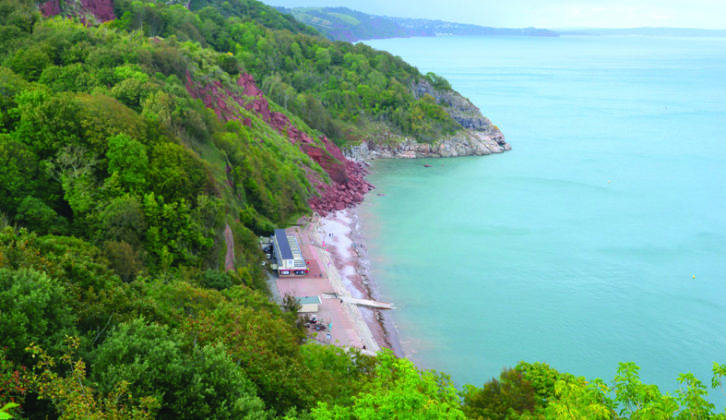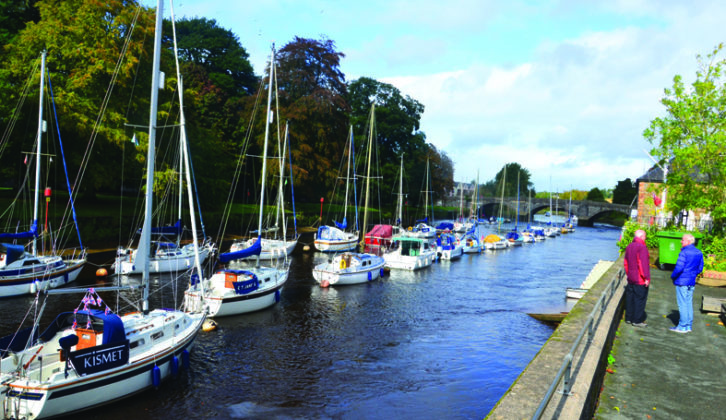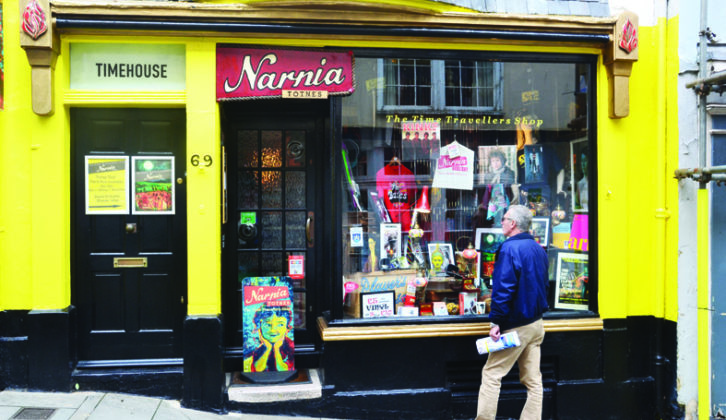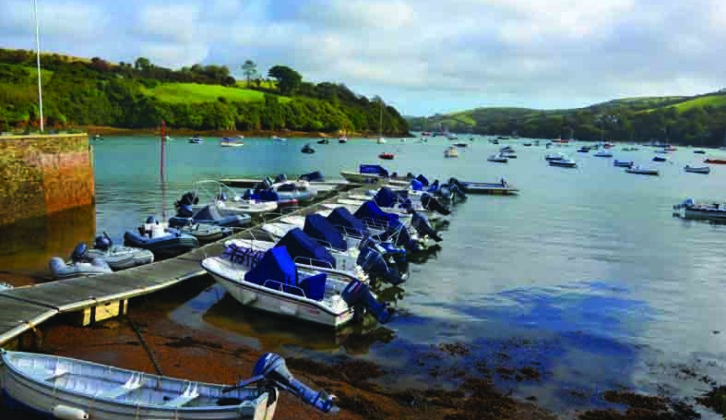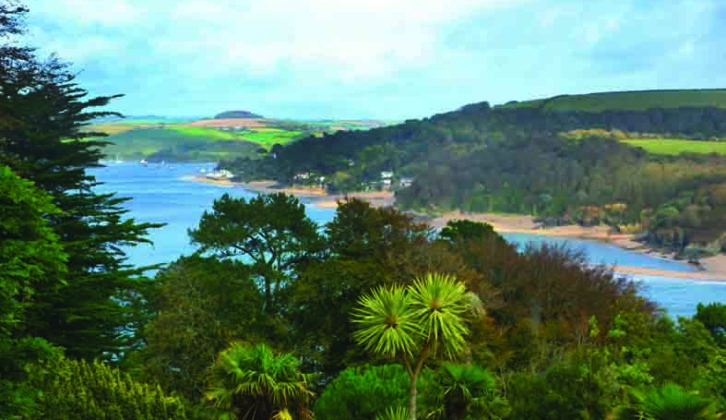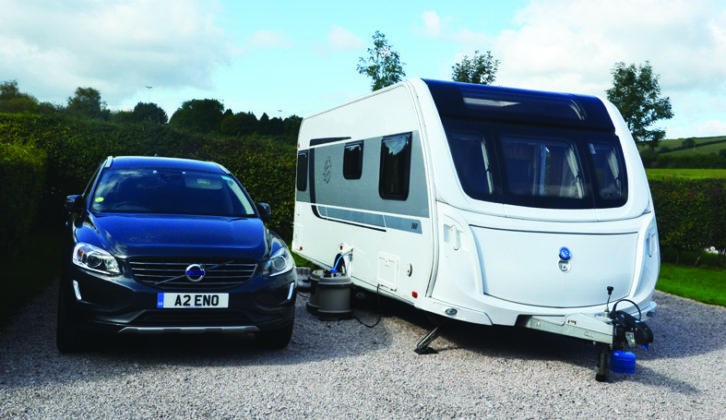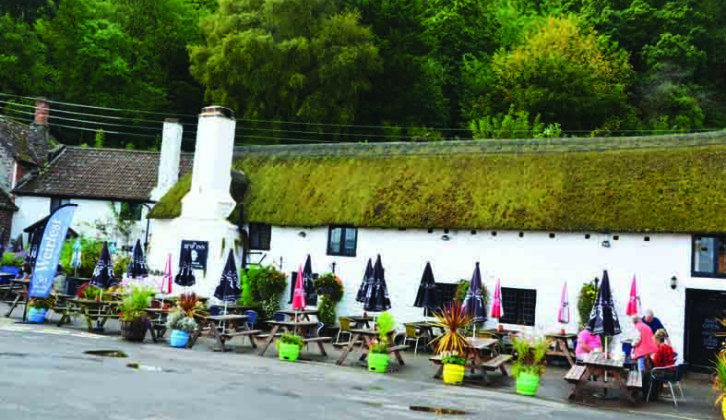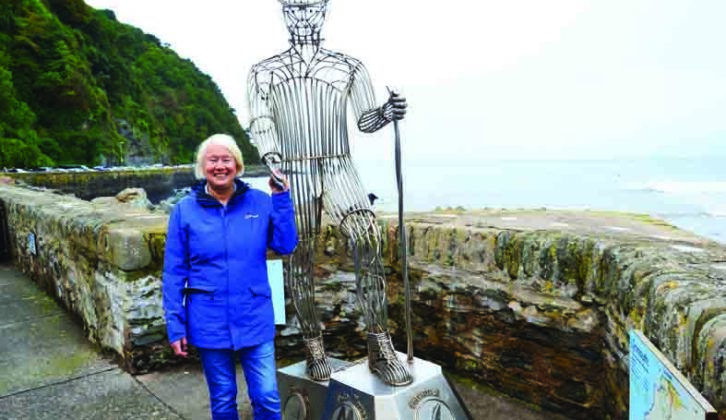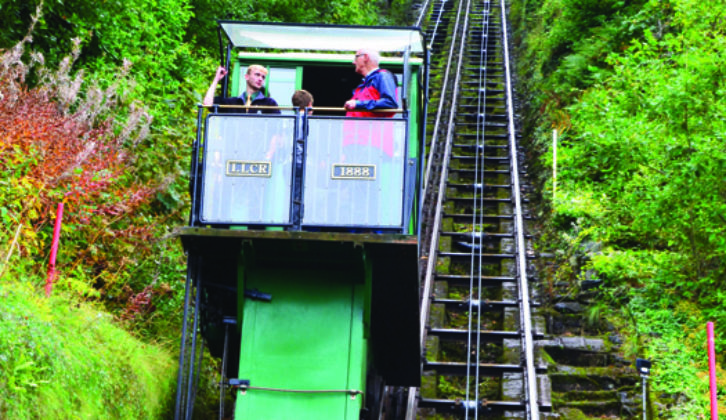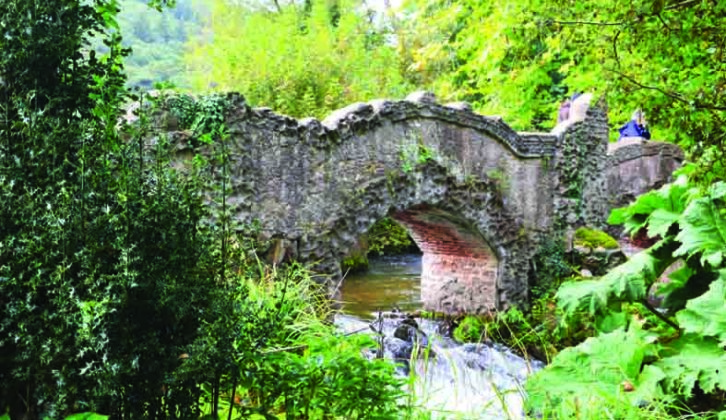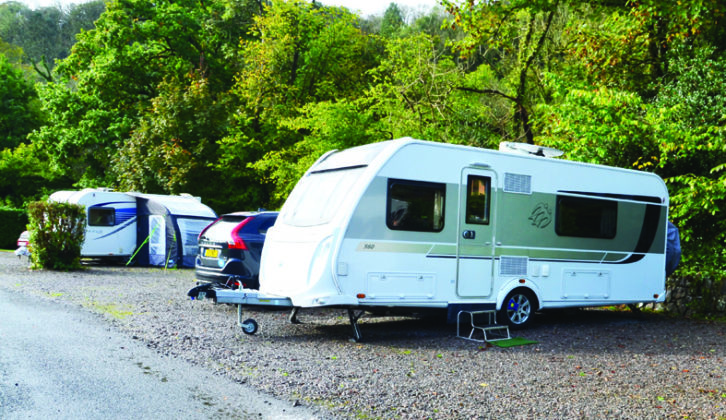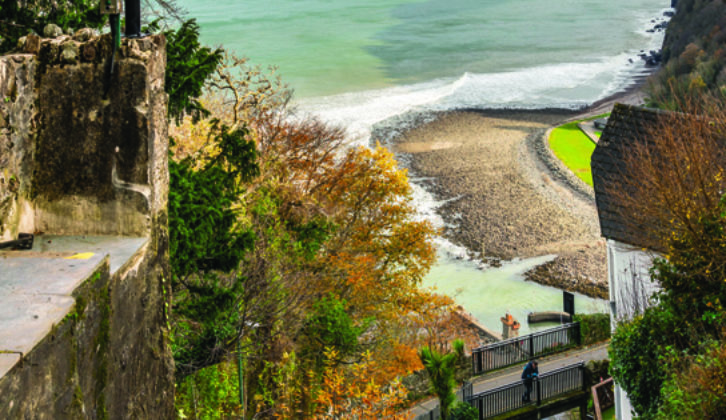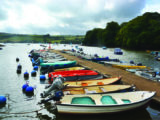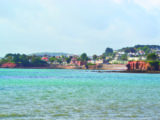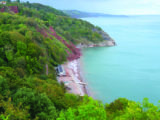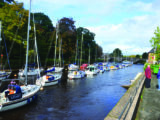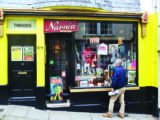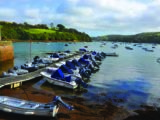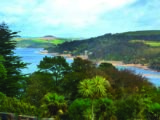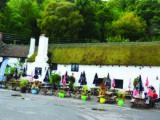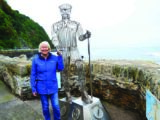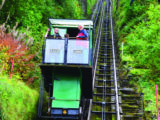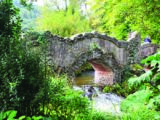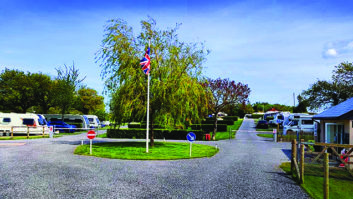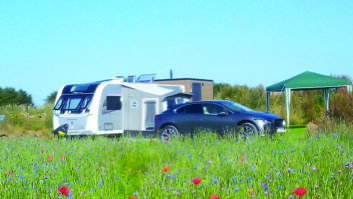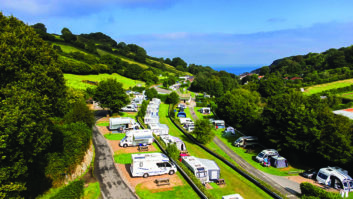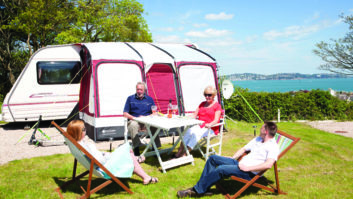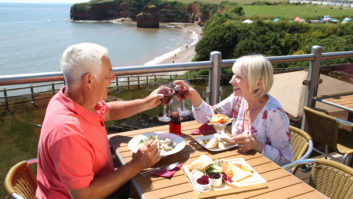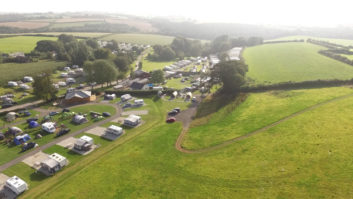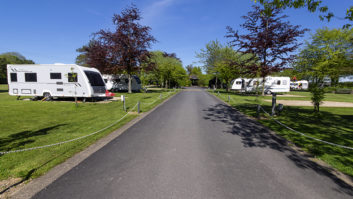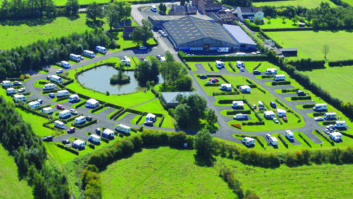As I gazed down on Oddicombe Beach, Torquay, I was transported back to a trip to Devon in 1967, the summer of ‘love’ – more like the summer of A-levels for boyfriend Steve and me.
Then, we’d been snapped by a beach photographer. We both had long hair, and I was wearing short shorts, a sleeveless top and a big, wide-brimmed straw hat with white daisies adorning it. Oh yes, we looked the part!
Time for Torquay
I’ve never been back to Torquay since then and Joe hasn’t visited the area, so it was time to make amends. As we turned into Ramslade C&MC Site, the sun was shining in a clear sky – but we’d seen the forecast and this wonderful weather was not likely to last.
We set off next day to Brixham and parked in the long-stay car park next to the sea. It was then a stroll to the fishing harbour, full of trawlers, and a café that proclaimed “Tomorrow’s fish are still in the sea”.
Brixham is a hilly town with pastel-painted houses overlooking the harbour. This reminded me of a photo I took years ago, of an artist painting the scene on the jetty. Now the artists all seem to have their own studio.
Neither were there any guitarists with a harmonica balanced on a bent coat-hanger – aspiring Donovans or Dylans. But the full-size replica of Sir Francis Drake’s Tudor galleon, the Golden Hind, was still there.
Further on, we came across the statue of the Prince of Orange, later William III, who landed in Brixham with his army in 1688, in the Glorious Revolution.
We continued walking towards the marina and found a more recent sculpture, which I really liked, ‘Man and Boy’, life-size figures of two men at a ship’s wheel. This honours the fishing heritage of the region.
Walking on the moors
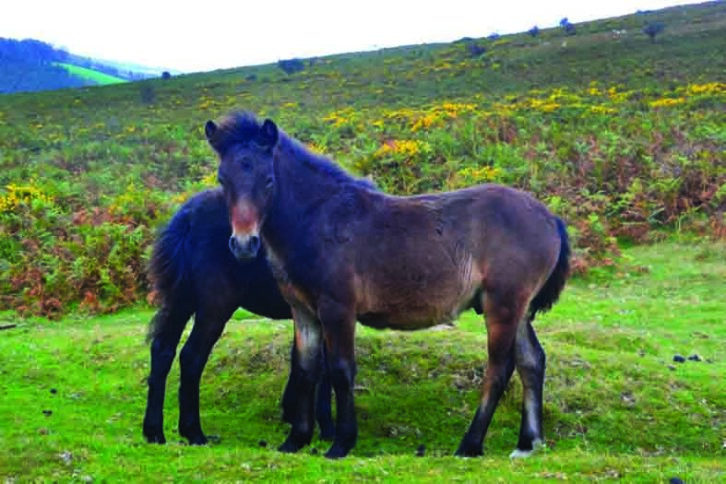
Making the most of the fine weather, next day we set off for Dartmoor. The landscape changed from wooded valleys and fields to heather and ferns, and finally moor, with the dramatic granite tors Dartmoor is famous for.
Pausing for photos, we detoured to Dartmeet, where the rivers East and West Dart, er, meet. There’s a car park here, and grassy banks by the river, with rockpools and a little clapper bridge to clamber over.
It’s a great place for a picnic when the weather is good. Our tip is to drive through the car park to the Badgers Holt café and restaurant, park there for free, grab a coffee and walk to the river. We lunched there: Joe chose a ploughman’s and I had a BLT baguette.
We drove eastwards across Dartmoor, and to my delight, saw Dartmoor ponies by the road. We stopped at Widecombe in the Moor, a pretty village with a green.
The imposing village church, St Pancras, was built by the wages of the local tin miners. Known as the Cathedral of the Moor, it can be seen for miles around.
Next to the church is the characterful Church House, thought to have begun as a brewery, later becoming an almshouse, the village school and now a meeting place.
The village is famous for Widecombe Fair, held in September, which used to take place on the green, but has been relocated to a nearby field.
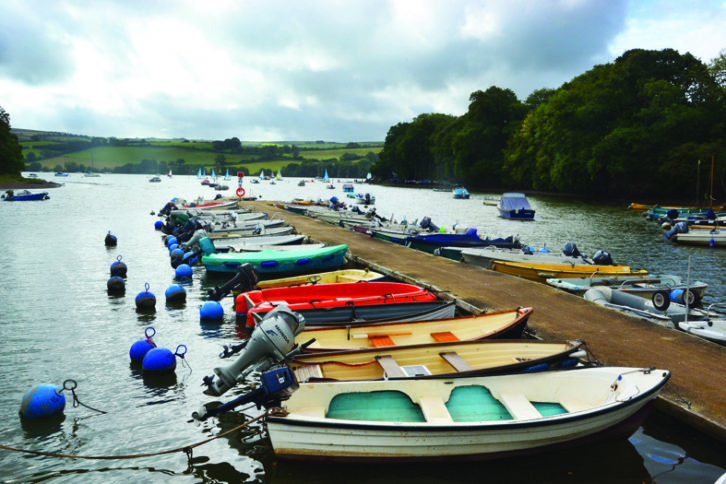
Our friends, Helen and Roy, were due to join us for the remainder of our stay at Ramslade. Meanwhile, in the morning, we walked to Stoke Gabriel – the nearest village to the campsite – along quiet lanes. Down by the small harbour, there’s a cafe/restaurant, where we drank tea while watching yachts skimming across the water.
Mansions and a castle
There are lots of National Trust properties within a short driving distance of the site, making it worth joining the NT if you’re holidaying in the area.
Helen and Roy did just that at the first house we visited, Coleton Fishacre. Originally home to Rupert D’Oyly Carte (of opera fame) and his wife, Lady Dorothy, this Arts and Crafts mansion, built in 1926, is furnished in the Art Deco style.
We toured the gardens first, pleasantly surprised at the wealth of colour on display. The grounds run down the valley to Pudcombe Cove, where the family used to go sailing. However, we took the path through the trees to the ‘stunning view’ we’d been told to look out for, at which point the rain came down and it was obliterated by mist. We retreated to the cafe!
Next day we drove to the edge of Dartmoor, to Castle Drogo, the last castle to be built in the UK. Designed by Edwin Lutyens for self-made millionaire Julius Drewer, it was constructed between 1911 and 1930.
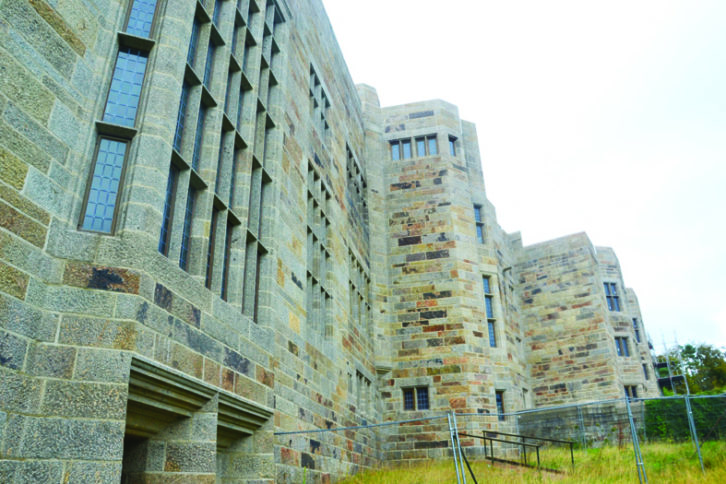
Lutyens had wanted to build a mansion, not a castle, and the result was smaller than the original design. The National Trust has owned it since 1974 and began major restoration work in 2013. Lutyens might well have had a point, because the castle’s interior feels more like a family home, despite its impressive size and décor.
I spent quite a few holidays with my parents, aunts and uncles at Torquay, so I was keen to revisit this fine resort. My memories are of warm sunny days swimming in the sea at Torre Abbey Sands, with the backdrop of the palm-fringed promenade (hence the name for the area – the English Riviera).
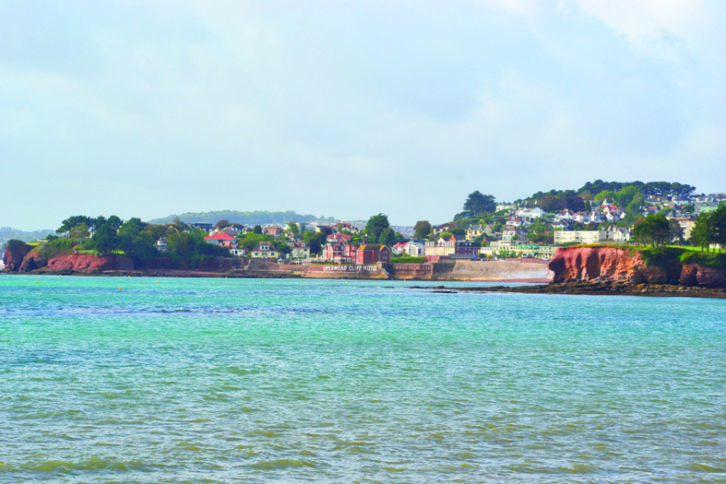
Admittedly, it wasn’t quite the same at the time of our visit in late September – Torquay was quite quiet, compared with bustling Brixham. We sipped our coffee and tea at the harbour, watching boats enter and leave. Later we lunched at the Bistro in the Princess Theatre, where I’d been to variety shows with my parents.
Time for a cream tea
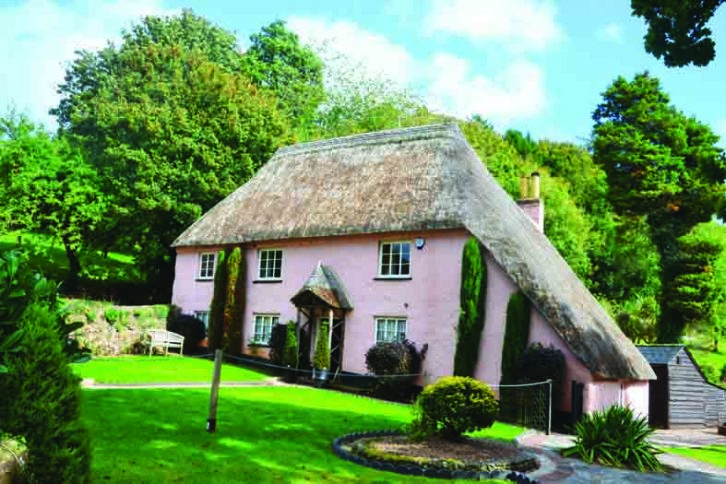
In the afternoon, we drove to Cockington, a pretty little village where many properties are thatched, including the forge, which has been in the same place for 500 years. We walked to Cockington Country Park, where we found Cockington Court, home to the Mallock family from 1654 to 1932 and now a craft centre.
The nearby church, said to have been on this site since 1069, has a wonderful rood screen.
Back in the village, Helen and I spotted an enticing café selling Devon cream teas. Roy and Joe didn’t take much persuading! We all enjoyed a traditional spread, with delicious scones, jam, cream and a pot of tea.
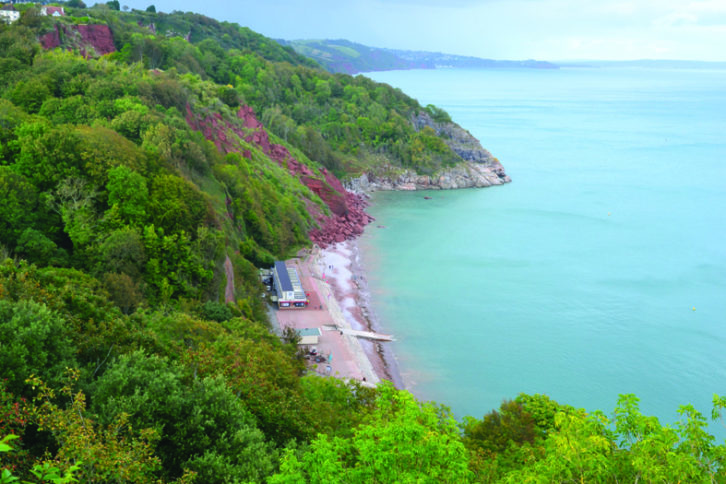
Then we made our way to Babbcaombe Down to see Oddicombe Beach – for me, more memories. I had visited here with Steve, but also earlier with my parents, when we used to go to the Babbacombe Theatre.
Next day, we drove to Greenway, the holiday home of Agatha Christie. You can travel here by steam train from Paignton to Kingswear, or ferry from Dartmouth. Greenway, a lovely Georgian house set in woodland with beautiful views of the Dart, houses a collection of over 11,000 objects – silverware, china, books and other artefacts. Christie’s husband was an archaeologist and they both went on digs in Iraq.
Shopping in Totnes
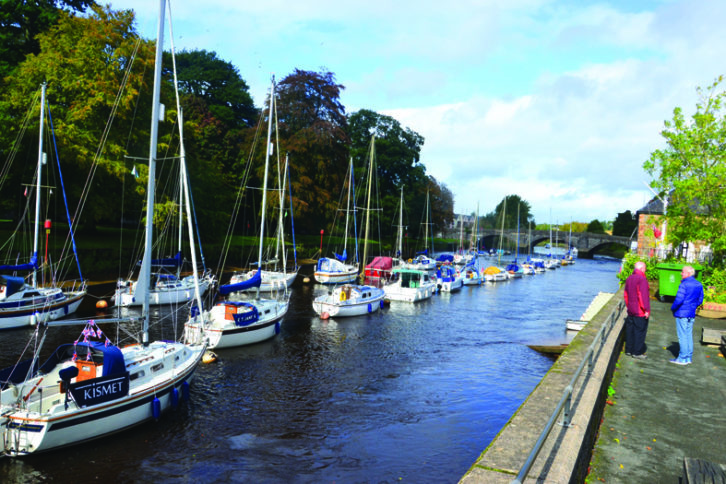
The ancient market town of Totnes is one place I had not visited before. We parked by the River Dart and walked into town, up the hill and under the East Gate Arch, once the entrance to the medieval town.
We loved the many unusual shops here, such as the Devon Harp Centre, Not Made in China (an antique dealer) and the Time Travellers Shop.
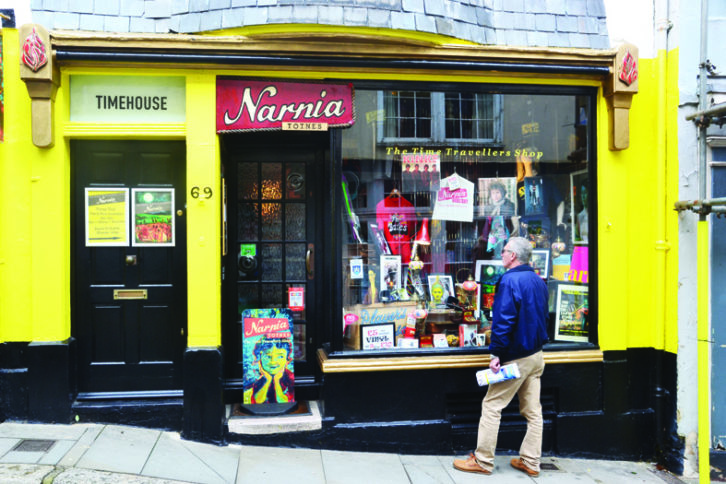
Walking down the narrow alleys, known as ginnels, we eventually came to Totnes Castle, built just after the Norman Conquest. The 15th-century church, of Devon sandstone, dominates the High Street, and behind the church is the Guildhall, built in 1533. We loved Totnes and there’s plenty more to see and do here.
Stunning Salcombe
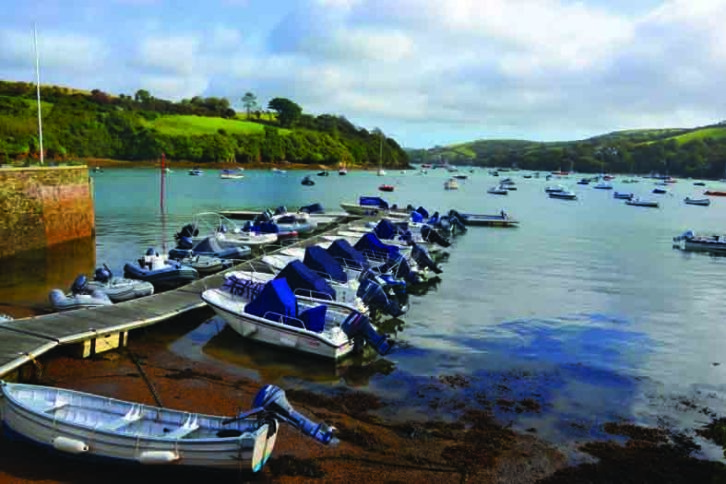
Another town on my list to revisit was Salcombe. It’s surprising the facts that stick – I remembered the main street here was Fore Street, perhaps because I was living on a different Fore Street back then.
Salcombe has some quirky shops – not on the scale of Totnes – and views across Kingsbridge Estuary that are simply stunning. Looking for a snack, we stopped at the Salcombe Pasty Shop and sat outside.
Then it was off to another National Trust property, Overbeck’s. Here, the main attraction is the garden; with its sheltered aspect, it supports many sub-tropical and exotic plants. And the views are utterly beautiful. The original owner, Otto Overbeck, was a research chemist, linguist, artist and inventor. He devised an ‘electrical rejuvenator’, which he claimed could defy the ageing process. It sold worldwide and enabled him to purchase the fine house and gardens.
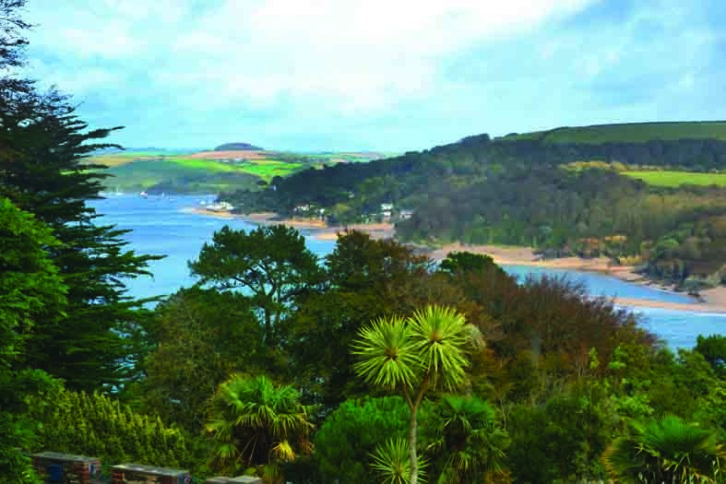
Our time together nearing an end, we enjoyed a farewell meal at the King William IV – good pub grub, with steak and ale pie for Roy and I, liver for Joe and bubble-and-squeak for Helen.
Next day, we left for Exmoor House C&MC Site, near Dulverton, just inside the Somerset border. We had a lot planned, but the weather had other ideas. We did explore the village, which is a short walk from the campsite. There are plenty of independent shops and restaurants here, and a handy garage, too.
One building in the centre caught my eye: built in 1760, it was originally the market house and was later converted to the town hall. A porch and an external double staircase were added in 1930.
Porlock and Lynmouth
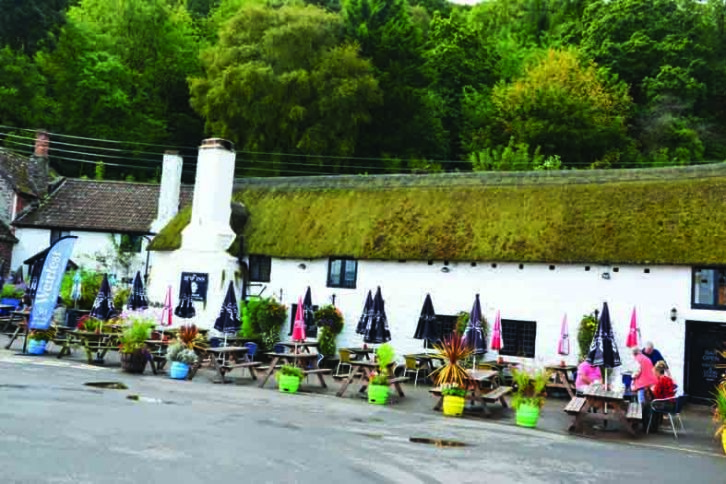
A better day dawned, so we seized the opportunity to drive north to the coast at Porlock Weir, where there’s a little harbour packed with leisure craft.
This is a pretty, quirky village, where we stopped atThe Ship Inn for coffee. Porlock Weir is an outdoorsy place, with sailing, walking, cycling and fishing on offer.
We drove up Porlock Hill and down Countisbury Hill to Lynmouth. I remember going there when memories of the great flood, in 1952, were still very real.
In the flood, 34 people died and 420 were displaced – many local properties were destroyed. But the village was rebuilt, and the river was diverted. We came across an intriguing sculpture, called ‘The Walker’ and Joe couldn’t resist taking a photo of me with my new pal! We soon found a pleasant little café for lunch and again chose pasties – which we seemed to have become quite hooked on during our holiday.
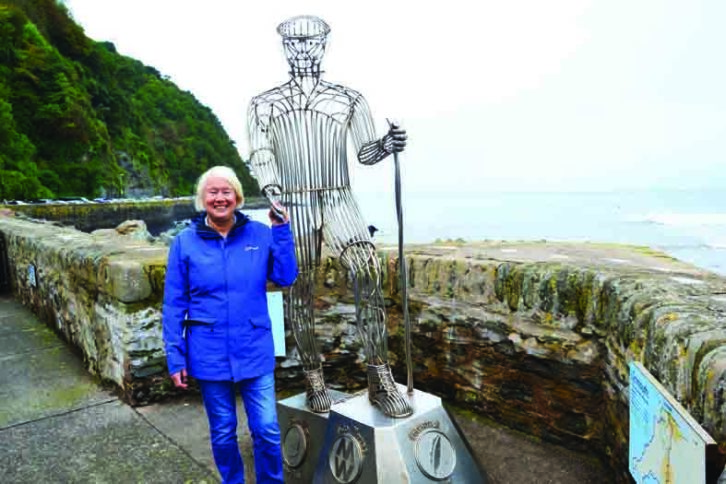
Afterwards, we took the water-powered funicular to Lynton; I knew this would fascinate Joe, as a former engineer. The cliff railway opened in 1890 and has been in continuous use ever since.
Returning to the car, we drove through Lynton to the Valley of the Rocks, another place I remember my father driving through. It’s amazing, with weirdly shaped hills and rocky cliffs descending to the sea below.
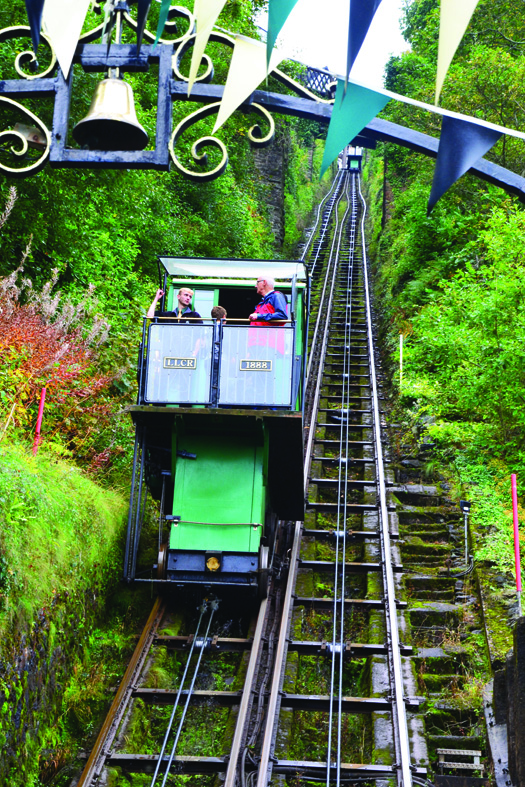
Driving through the valley, we came to the toll road, which is not for the faint-hearted! It’s narrow – our car was almost touching the hedges on both sides – and not one-way, as we discovered when we met other tourists approaching from the opposite direction.
I saw some glimpses of pretty coves, but we both had our eyes on the road, and were glad to emerge on to a wider section. Joe had had enough driving for the day, so I drove over Exmoor just as the clouds opened and horizontal rain pelted the car.
Working watermill
Our final day, and we decided to spend it at Dunster, visiting its castle and gardens – and yes, it’s another National Trust property!
After a warm welcome, we were recommended to walk through the River Garden and over Lovers’ Bridge to the Water Mill; this is still a working mill, recently restored, and is a rare example of a double overshot mill with two waterwheels. Volunteers were filling bags with flour, which were for sale. Artifacts such as handcarts and threshers are on display upstairs.
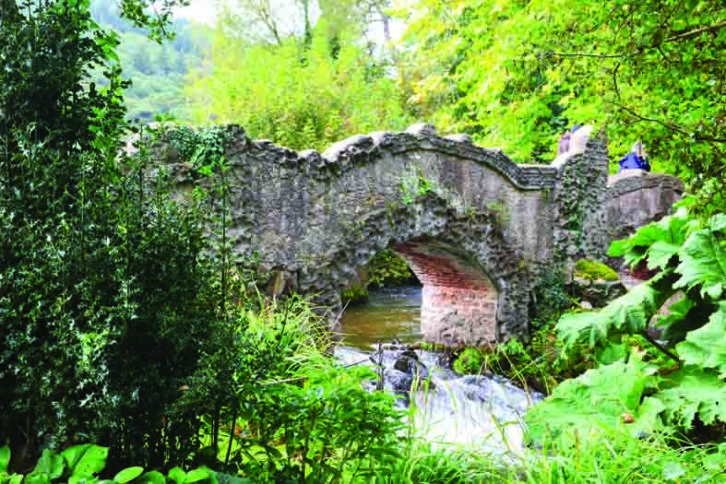
Set on a hill, Dunster Castle is a former motte and bailey structure, now a country house. There’s been a castle here for more than 1000 years, starting as a Saxon stronghold and then occupied by the Normans in 1086. Subsequently, it was the home of the Luttrell family for about 600 years, before being given to the National Trust in 1976, complete with contents.
Another guide recommended visiting Dunster Church to see its rood screen, which was magnificent. We took the opportunity to stroll around the village and I vividly remember the Yarn Market here.
But my most notable recollection of visiting this area takes me back to 1969, when my parents, fiancé Steve and I were staying at the Lee Bay Hotel, watching the moon landing. Now that really was a memorable event!
TRIP PLANNER
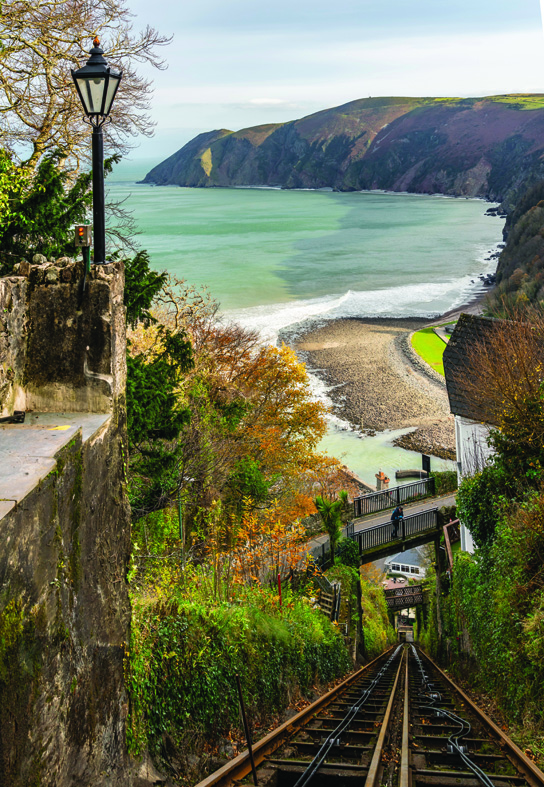
When to go
We planned our trip for mid-September to early October. It was quieter, but most campsites and attractions were still open. Avoid high summer if you don’t like the crowds.
Where we stayed
Ramslade C&MC Site
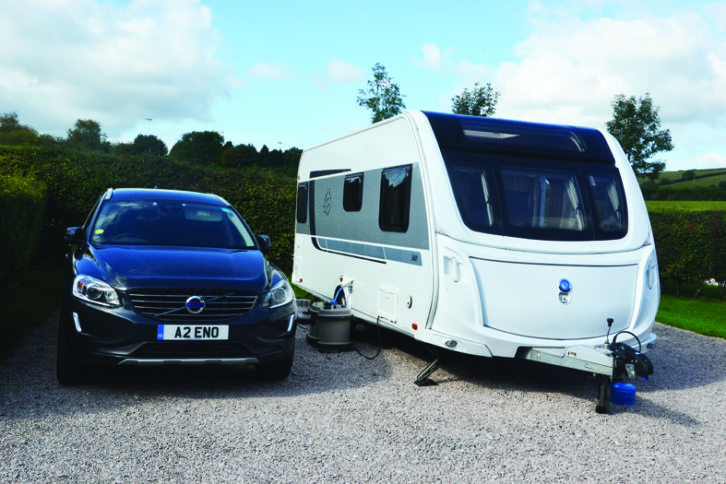
- Stoke Road, Stoke Gabriel, Totnes, TQ9 6QB
- 01803 782 575
- www.caravanclub.co.uk
- Open 13 March to 2 November 2021
- Charges £23-£30.80
This large campsite has 153 pitches and is divided into two areas, each with its own toilet block, one of which was closed at the time of our visit.
Cleanliness is up to the standard you would expect from a Club site.
There’s a playing field for the children, and the bus stop is just outside the site entrance.
We chose the campsite for its easy access to the places we wanted to visit, such as Torquay, Brixham and Totnes. Do follow the Club’s directions to the site, because there are narrow roads in the vicinity.
Exmoor House C&MC Site
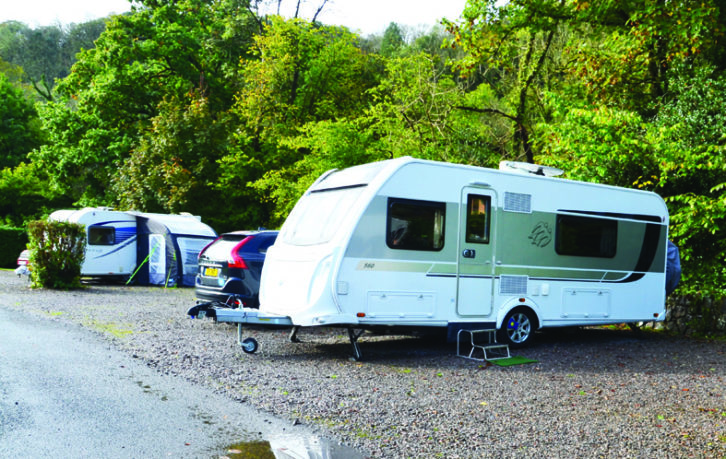
- Kemps Way, Dulverton, TA22 9HL
- 01398 323 268
- www.caravanclub.co.uk
- Open March to January
- Price £21.70-£32.40
Exmoor House is in a quiet corner of Dulverton, by the River Barle. There are 66 pitches and the facilities are of a high standard.
It’s an easy walk into Dulverton to stock up on provisions. It’s not far to the coast and Exmoor is right on the doorstep.
Find out more
Our outfit
We towed our 2017 Knaus Starclass 560 with our 2017 Volvo XC60 AWD.
If you liked this… READ THESE:
Devon: Practical Caravan Travel Guide
15 socially distanced activities to enjoy from a campsite
If you’ve enjoyed reading this article, why not get the latest news, reviews and features delivered direct to your door or inbox every month. Take advantage of our brilliant Practical Caravan magazine SUBSCRIBERS’ OFFER and SIGN UP TO OUR NEWSLETTER for regular weekly updates on all things caravan related.
We drove eastwards across Dartmoor, and to my delight, saw Dartmoor ponies by the road.
